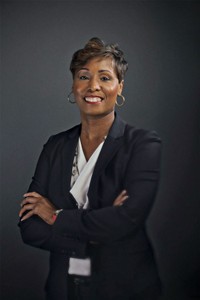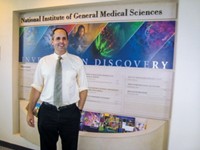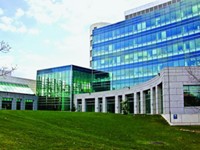Advertisement
Grab your lab coat. Let's get started
Welcome!
Welcome!
Create an account below to get 6 C&EN articles per month, receive newsletters and more - all free.
It seems this is your first time logging in online. Please enter the following information to continue.
As an ACS member you automatically get access to this site. All we need is few more details to create your reading experience.
Not you? Sign in with a different account.
Not you? Sign in with a different account.
ERROR 1
ERROR 1
ERROR 2
ERROR 2
ERROR 2
ERROR 2
ERROR 2
Password and Confirm password must match.
If you have an ACS member number, please enter it here so we can link this account to your membership. (optional)
ERROR 2
ACS values your privacy. By submitting your information, you are gaining access to C&EN and subscribing to our weekly newsletter. We use the information you provide to make your reading experience better, and we will never sell your data to third party members.
Safety
Judith Greenberg
Developmental biologist leads NIH flagship institute through tough economic times
by Britt E. Erickson
June 25, 2012
| A version of this story appeared in
Volume 90, Issue 26

For the second time during her more than 30-year tenure at the National Institutes of Health, Judith H. Greenberg finds herself serving as the acting director of NIH’s National Institute of General Medical Sciences (NIGMS). Greenberg’s latest stint at the helm started last summer when former NIGMS director Jeremy M. Berg stepped down to take a position at the University of Pittsburgh.
As acting director of NIGMS, Greenberg oversees an annual budget of about $2.4 billion. Often considered NIH’s flagship institute, NIGMS funds about 4,500 basic biomedical research grants each year and more chemistry than any of NIH’s other institutes and centers.
C&EN sat down with Greenberg late last month to talk about how she is handling the challenges and opportunities facing NIGMS today and to learn how the institute has changed since the last time she served as its acting director, from 2002 to 2003.
Although Greenberg is only an acting director, she isn’t the type of person who is willing to mark time and wait for a permanent NIGMS director to take over. In her temporary role, she says she can accomplish as much as any permanent director can. “Given how long it sometimes takes to get a permanent director, you can’t sit still and put everything on hold,” she emphasizes.
One of the biggest challenges facing NIGMS and all of NIH today is a lack of funding, Greenberg tells C&EN. A decade ago, NIH was in the midst of an effort to double its budget over a five-year period. That budget-doubling effort ended in 2003, and since then the NIH budget has remained flat.
“It is a lot easier to preside over a growing budget than it is over a budget that is at best flat and probably going to be worse than that,” Greenberg says. “In 2002, the biggest problems were to decide what new initiatives to start and how best to spend the money,” she notes.
Today, Greenberg spends a lot of time prioritizing what programs are essential and which ones can be cut. It is not always straightforward, she says, because NIH has become a more complex place than it was 10 years ago. In particular, “there seems to be a lot more cooperation among institutes” and more activities that span several NIH institutes and centers than ever before.
Greenberg doesn’t necessarily see the increase in trans-NIH activities as a problem, but with such activities come more committees and working groups, all of which take up leadership’s time, she explains.
Under Greenberg’s leadership, NIGMS reorganized two of its divisions earlier this year, in part because of new programs it inherited when NIH eliminated the National Center for Research Resources. “A lot of decisions about personnel had to made,” she says.
One of those reorganizations combined training and the development of a strong and diverse workforce into one division. Previously, training efforts were spread across NIGMS. The other reorganization created a division of biomedical technology, bioinformatics, and computational biology from what was previously a center within NIGMS.
A developmental biologist by training, Greenberg looks forward to the day when NIGMS finds a permanent director. The director’s office where she temporarily resides remains undecorated, and the bookshelves are bare. Although she is glad to help keep NIGMS moving in a positive direction, she is anxious to get back to her regular duties as director of the institute’s Division of Genetics & Developmental Biology, where she oversees about 1,700 research and training grants.
“There are things I miss about being in a division,” she says. In particular, Greenberg wants to get closer to the science and see scientific progress as it is being made. “I find I am getting further and further removed because there is so much more that I have to follow,” she tells C&EN.
At the same time, she says, seeing the breadth of topics that NIGMS funds has helped keep her energized. “A lot of things that may not have excited me in the past because I just wasn’t so knowledgeable about them, really do excite me now,” she says. In particular, she points to studies aimed at unraveling the underlying mechanisms of complex disorders and efforts in glycomics—the comprehensive study of carbohydrates.
Greenberg has a long-standing interest in managing collections of genetic data for use in biomedical research. For decades, she served as a project officer for the NIGMS Human Genetic Cell Repository, a collection of well-characterized human cells lines and DNA derived from them. Privacy concerns raised by collecting tissue samples also piqued her interest in bioethics.
One of Greenberg’s more unusual assignments during her career at NIH was to chair an advisory committee of the DeWitt Stetten Jr. Museum of Medical Research, a small museum open to the public with exhibits in the Clinical Center on the NIH campus in Bethesda, Md. From 2001 to 2006 she provided the museum with advice on exhibits.
Although Greenberg no longer works on museum exhibits, she spends her weekends enjoying the arts in Washington, D.C. She owns a weekend retreat just a block away from the National Gallery of Art, making it convenient for her and her husband to get to the museums, theater, and concerts.





Join the conversation
Contact the reporter
Submit a Letter to the Editor for publication
Engage with us on Twitter